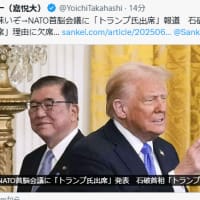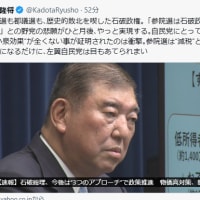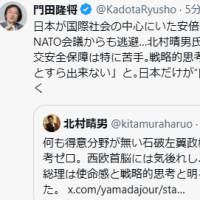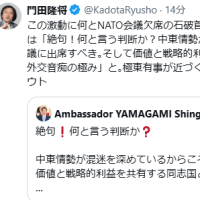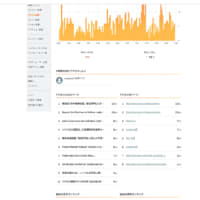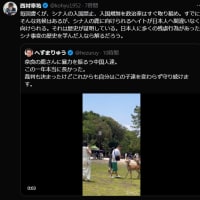The majority of Japanese people remain shockingly indifferent to the realities and objectives of Soviet intelligence operations against Japan. Yet the KGB's operations targeting Japan have been relentless and meticulous.
October 29, 2018
This is a re-posting, for the purpose of public warning, of a chapter originally published on April 25, 2018.
The Levtchenko Affair
(Emphasis in the text and the final statement are mine.)
The Levtchenko Affair refers to the exposure of Soviet intelligence activities in Japan conducted by Stanislav Levtchenko, a major in the KGB (Committee for State Security of the Soviet Union).
On July 14, 1982, Levtchenko revealed the details of his operations at a closed hearing of the U.S. House Permanent Select Committee on Intelligence, sending shockwaves throughout Japan and abroad.
Background – Defection
After graduating from the Institute of Oriental Studies at Moscow State University, Levtchenko worked at a fisheries research institute before entering the KGB.
After completing the Japanese language program and related training, he was assigned to the KGB Tokyo Station in February 1975.
His cover role was as a Tokyo correspondent for the Soviet international affairs weekly magazine Novoye Vremya.
At the KGB Tokyo Station, he served in the Active Measures (PR) division, and before defecting, he was the acting chief of that division, overseeing five operatives.
On October 24, 1979, he defected to the United States, leaving his wife in Tokyo and one child in the Soviet Union.
(See also: “Stanislav Levtchenko”)
Exposure
On July 14, 1982, Levtchenko testified in a closed hearing chaired by Edward Boland of the U.S. House Permanent Select Committee on Intelligence, exposing the full extent of KGB active measures operations against Japan.
The testimony was reported in Japan on December 2 of that year, and on December 9, the committee released a report titled “Soviet Active Measures”, including related documents.
On December 10, Levtchenko himself held a press conference in Washington, and in May 1983, journalist John Barron, a KGB expert and Reader’s Digest editor, published a book based on the testimony titled “KGB Today: The Hidden Hand”.
Although Levtchenko was sentenced to death in absentia by a Soviet military tribunal in August 1981 for high treason, he later acquired U.S. citizenship in 1989.
Testimony – Levtchenko’s Activities
While stationed in Japan, Levtchenko was in charge of Active Measures, which involved contacting figures in politics, business, and media, to manipulate public opinion and policy in Japan in a pro-Soviet direction.
Ultimately, his goal was also to undermine Japan–U.S. relations.
KGB Agent Classifications
Within the KGB, collaborators in active operations were categorized as “agents”, classified into four types:
-
Real Agents: Individuals fully under KGB control.
-
Trusted Contacts: Influential figures in politics, business, academia, and media who knowingly cooperated with the KGB, supplying information to the Soviet side or disseminating disinformation domestically.
-
Friendly Contacts: Individuals not yet full collaborators but maintaining friendly ties with undercover KGB officers posing as journalists or businessmen.
-
Developing Contacts: Individuals the KGB had identified as promising after multiple interactions.
During Levtchenko’s time in Tokyo, at least 200 Japanese nationals were classified as KGB agents.
Levtchenko’s Direct Agents
Levtchenko directly handled around 10 Japanese agents, who were compensated for their services.
He disclosed 33 codenames, including nine real names of agents.
Named individuals included:
-
Hirohide Ishida (former Minister of Labor) – codename: Hoover
-
Seiichi Katsumata (former Chairman of the Japan Socialist Party) – codename: Gabber
-
Shigeru Itō – codename: Grace
-
Takuzō Ueda (JSP Diet member) – codename: Uranov
-
Takuji Yamane (Deputy Editor-in-Chief, Sankei Shimbun) – codename: Kant
(All titles as of 1979.)
All nine denied the allegations, claiming they were baseless and unfounded.
Among the codenamed agents were also media personnel, university professors, business elites, Ministry of Foreign Affairs officials, and Cabinet Intelligence and Research Office staff.
He also named eight KGB operatives who contacted these agents, including:
-
Ivan Kovalenko, former KGB Lt. Colonel and then Deputy Director of the Soviet Communist Party International Department’s Japan Division
-
Yerokhin and Glyanov, KGB Tokyo Station chiefs (1975–79)
Examples of Active Measures
Levtchenko cited several examples:
-
A January 1976 report in Sankei Shimbun, supposedly quoting Premier Zhou Enlai’s will after his death, was in fact a KGB fabrication.
-
Foreign Ministry agents “Nazar” and “Rengo” allegedly leaked numerous classified diplomatic telegrams.
-
Public security agent “Schweik” transmitted intelligence via media agent “Ares.”
Levtchenko’s Warning
In his testimony, Levtchenko emphasized:
“Most Japanese are shockingly indifferent to the reality and purpose of Soviet intelligence and propaganda operations. The KGB’s work against Japan is persistent and thorough. Without an anti-espionage law or national secrets protection law, the Japanese government cannot effectively counter foreign intelligence activities or take action against domestic collaborators.”
Japanese Investigation
In March 1983, the Security Bureau of the National Police Agency and the Public Security Division of the Tokyo Metropolitan Police secretly sent two officers to the U.S. to interview Levtchenko.
They also began interviewing individuals named as agents and launched a fact-finding investigation.
On May 23, 1983, the National Police Agency announced its conclusion:
Though Levtchenko had direct contact with 11 individuals, including members of the Diet, due to the statute of limitations and lack of material evidence, it was impossible to pursue criminal prosecution.
They concluded none of the 11 were “real agents” and, at most, were “trusted contacts,” with no proven case of information leakage harmful to national interests. The investigation was closed.
However, authorities deemed Levtchenko’s testimony highly credible.
The Ministry of Foreign Affairs, which had been suspected of leaking classified telegrams, conducted its own investigation into the alleged agents “Nazar” and “Rengo,” and concluded by the end of May that no classified information had been leaked.
Soviet Response
In 1981, the Soviet court condemned Levtchenko as a traitor and liar.
Ivan Kovalenko, then head of the Japan Section of the Communist Party’s International Department, also denounced Levtchenko in his writings as a “mentally unstable liar.”
KGB agents Svetlana and Nikolai Ogorodnikov attempted to track Levtchenko in the U.S., but this effort was later exposed in the infamous Richard Miller spy case.
Footnote
Tsuneo Watanabe, chairman of Yomiuri Shimbun Group, later remarked that then-Chief Cabinet Secretary Masaharu Gotōda had requested the dismissal of a Yomiuri reporter involved in the Levtchenko affair. Watanabe said he delayed the reporter’s transfer so it would not appear to be under government pressure.
Today, all we need to do is replace ‘Levtchenko’ with agents from China or the Korean Peninsula.










